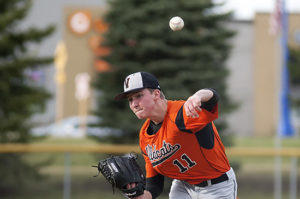May 5, 2022Protecting the Young Elbow, Part I
Elbow injuries in young baseball pitchers continue to rise and reduce participation. Second to the shoulder, the elbow is a vulnerable area and prone to injury in the young throwing arm. Unfortunately, many young pitchers experience elbow pain – and it should not be ignored. The elbow is susceptible to injury from the high valgus forces placed on it from pitching at all levels.
“In high school baseball pitchers, the elbow is the second most commonly injured area (18.9%) after the shoulder” (34.2%) (3). In junior baseball players (9-12 y.o.) risk factors include the number of throws, frequency, and pitching mechanics (8). Other identifiable risk factors exist and examining the risk factors for 9-18 years old and how to protect the young elbow joint from injury is the emphasis of this article.
 Anatomy of the Elbow
Anatomy of the Elbow
The radius, ulna, and humerus make up the elbow joint which is classified as a hinge joint involving mostly flexion, extension, pronation, and supination. A normal range of motion is 0 degrees of extension to approximately 150 degrees of flexion and 90 degrees for pronation and supination. The ulnar collateral ligament (UCL) gets a lot of attention because of the “Tommy John” surgery associated with its repair in many baseball pitchers. There is also a radial collateral ligament that is rarely mentioned.
In addition, there is a medial and lateral epicondyle that are attachment sites for flexors and extensors of the forearm with the common injury being medial or lateral epicondylalgia that occurs from overuse of those tissues (4). To be clear, there are other structures such as the annular ligament in the elbow joint that will not be discussed in this article. Obviously, risk factors and recommendations for injury prevention will change to some degree as physical maturation occurs between 9 and 18 years of age.
Discussion of Current Concerns
The specific mechanics of pitching puts excessive valgus stress on the UCL which is prone to tissue damage, inflammation, and overuse in the young, physically immature pitcher. In a study by Escamilla et al. in 2002 as well as other studies since then, surprisingly, the elbow joint is capable of extending at 2400 deg./second during the midpoint to late stage of the acceleration phase of pitching. This phase is the critical point where the most torque on the medial elbow and injury to the UCL is most likely to occur (8). Here are some more concerns to be aware of regarding elbow injury in young pitchers.
Fatigue/Overuse
Coaches, parents, and athletes need to understand fatigue and overuse are current risk factors in elbow injuries and need to be addressed adequately to prevent injury by looking for signs of fatigue and monitoring pitch counts (5,6,9). These are the two major risk factors reported throughout the literature and need to be addressed early and often by coaches, parents, and athletic trainers in order to reduce the number of elbow injuries in all young baseball players – not just pitchers. Here is a summary of risk factors from various studies (5,6,7,8,9).
Summary of Risk Factors:
- Pitching more than eight months a year – ASMI guidelines recommend 4 months a year of active rest from pitching.
- Pitching more than the accepted recommended age pitch counts.
- Playing for multiple teams
- Participation in showcases
- Pitch velocity greater than 85 MPH.
- Throwing more than 100 throws in a day – practice or game
- Being taller and heavier
- Pitching with arm fatigue. *
» ALSO SEE: Building Speed in the Trenches
The last point, pitching with arm fatigue, was shown to increase the risk of elbow injury 36 times (6)! This finding alone explains why it is so important to look for physical signs of fatigue and remove the pitcher (or any player) from the game immediately if any signs of fatigue are noticed. This is where good coaches at the lower levels can protect young arms by recognizing any signs of fatigue. Other observations in the Olsen study were that the risk of injury increased 5 times when “pitching for more than 8 months a year” which coincides with the ASMI recommendations of not pitching for 4 months a year. Post E., et. al. also report pitching for more than 8 months/year increases the risk for upper extremity injury. Active rest is necessary for a full recovery! Parents of young athletes need to understand the importance of active rest for a full recovery.
The follow-up to this story will appear in the June/July issue of Training & Conditioning.


